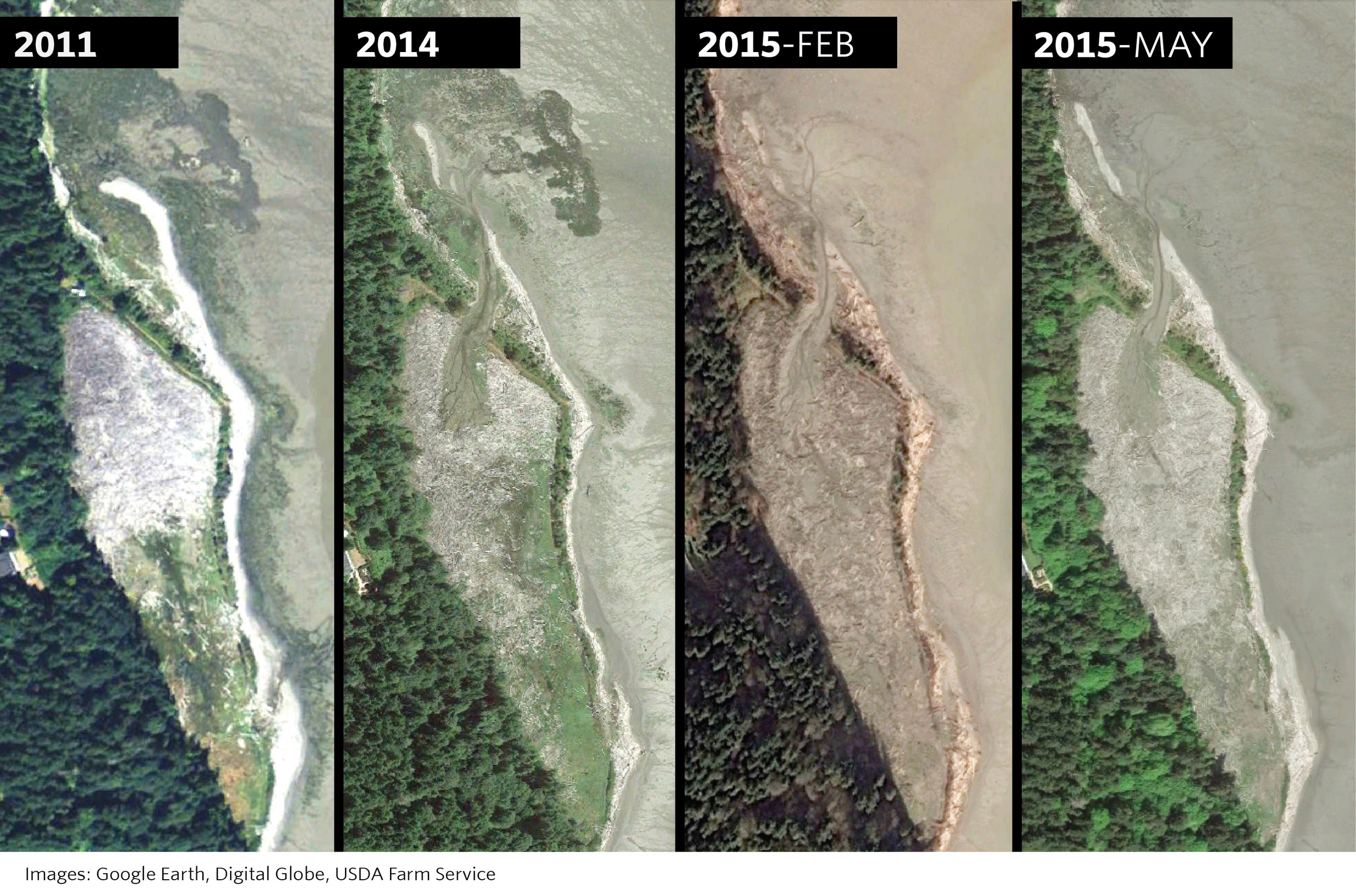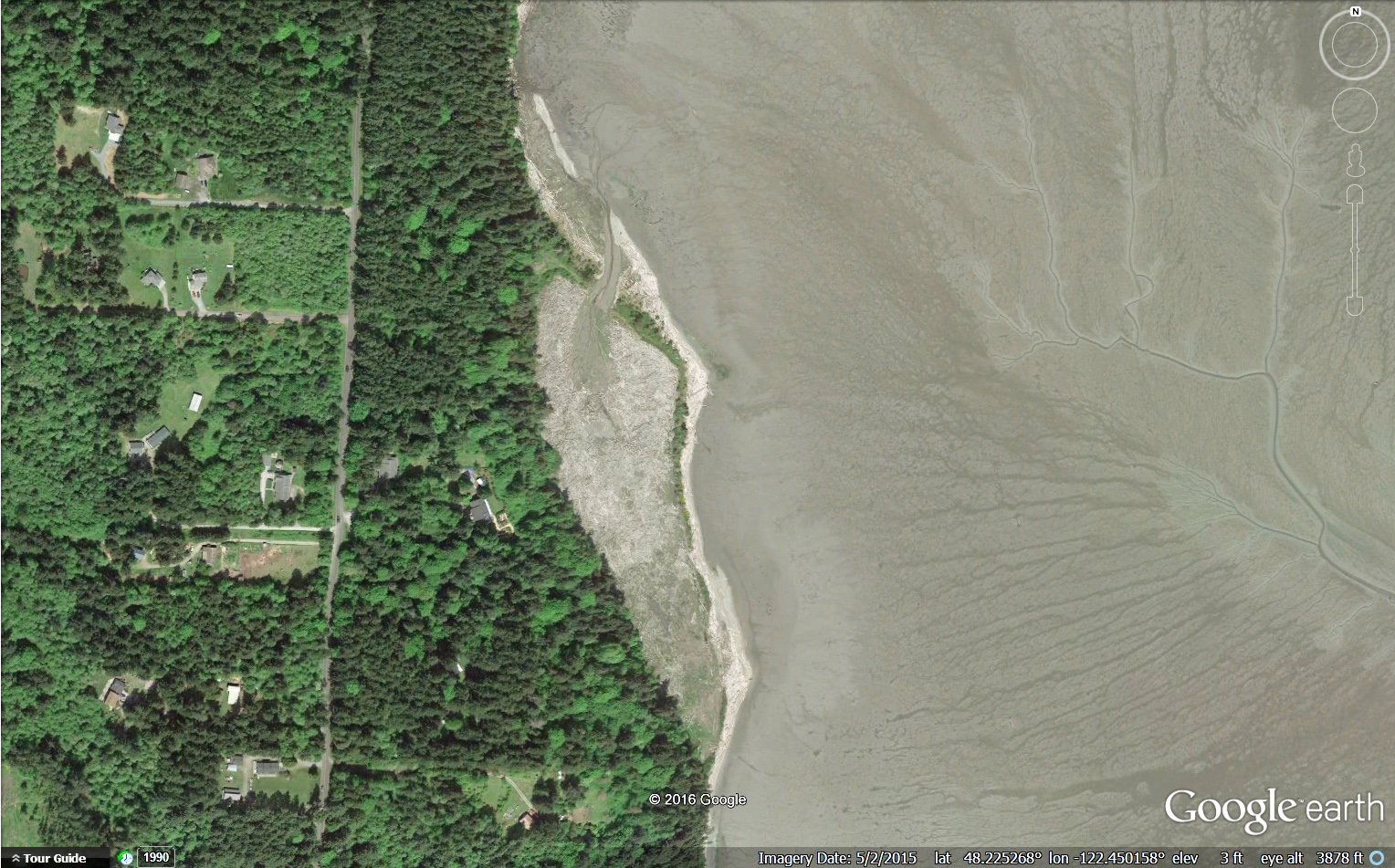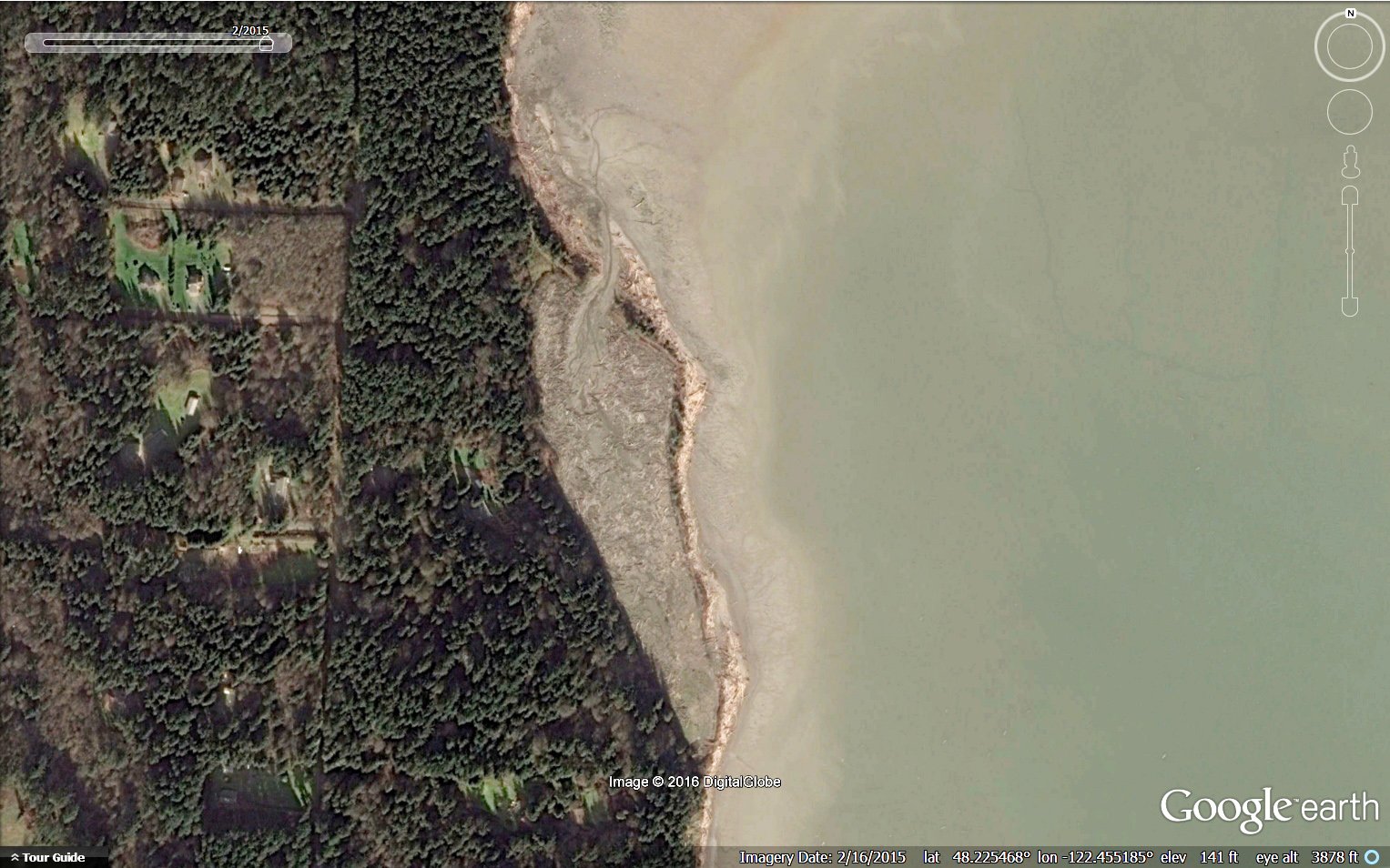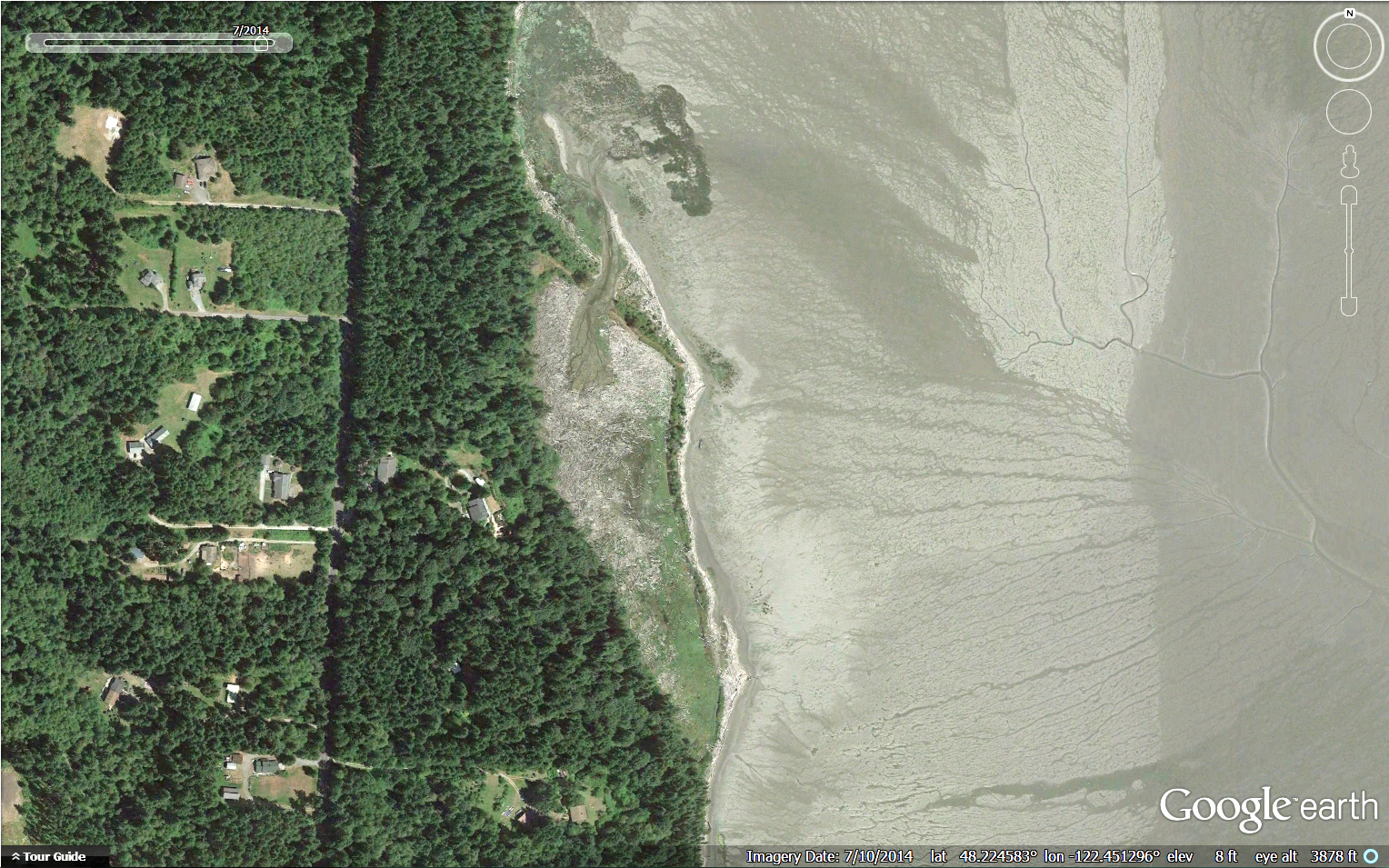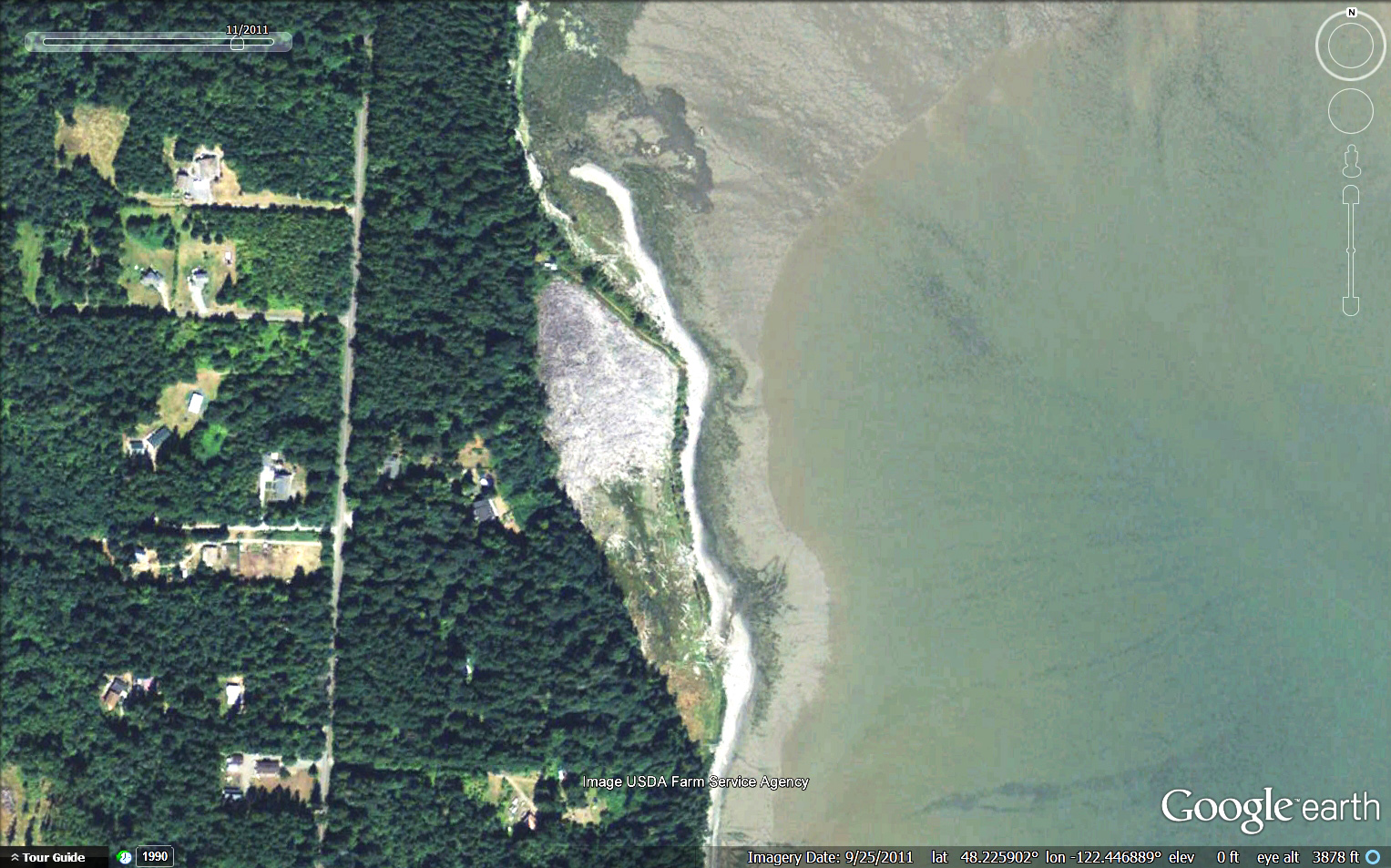Written by Joelene Boyd Puget Sound Stewardship Coordinator /Interim Stewardship Director
Maps by Erica Simek Sloniker, GIS & Visual Communications
Three years later the change is remarkable! Wood has moved out of the pocket estuary, the channel network is expanding and a natural sand spit is forming.
In 2012 The Nature Conservancy set work to restore a 10 acre pocket estuary in Livingston Bay. In order to do this we hired contractors to repair the breach at the southern end of the pocket estuary, breach the dike on the north end and excavate a “starter” channel so that tidal exchange would return. The desire was for wood to be carried out of the site by wind and tides and a channel would grow. The major goals of the project were to restore tidal influence to the pocket estuary, improve access for juvenile salmonids and other fish and restore salt marsh habitat.
From aerial images we see that this is exactly what’s happened - wood is moving out of the site through this starter channel allowing a network of channels and salmon habitat to develop. Additionally the natural sand spit is continuing to extend. It is impressive to see nature’s forces working to restore this pocket estuary with a little helping hand.
A pocket estuary is a type of nearshore habitat that is used to describe an estuary that is protected from waves, wind and other forces. Pocket estuaries in Puget Sound provide critical rearing habitat for juvenile Chinook salmon and other fishes that depend on these partially enclosed estuaries to eat, grow and seek refuge from predators. Researchers estimate that in the Whidbey Basin approximately 80% of the pocket estuaries have been lost.
Historically the Livingston Bay pocket estuary had been diked in the early 20th century to allow for grazing. However, sometime in the 1980s a storm had breached the southern end of the dike causing the area to fill up with wood from strong winter windstorms and high tides. After purchasing the property the Conservancy set to work on designing and carrying out a restoration project to restore the daily tides and function of the pocket estuary necessary to provide juvenile Chinook habitat which was identified as a limiting factor for Chinook salmon survival (Beamer 2003).


